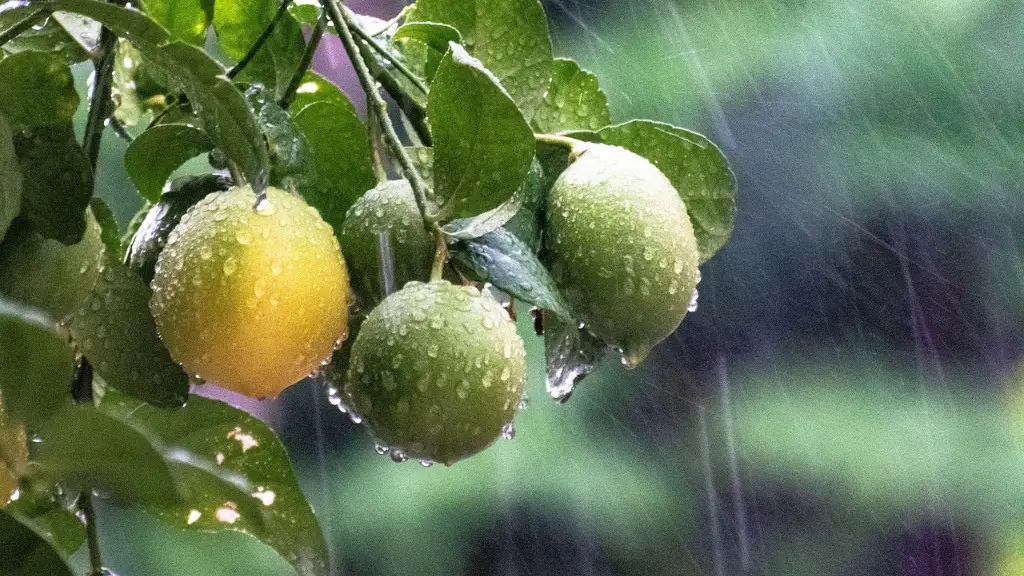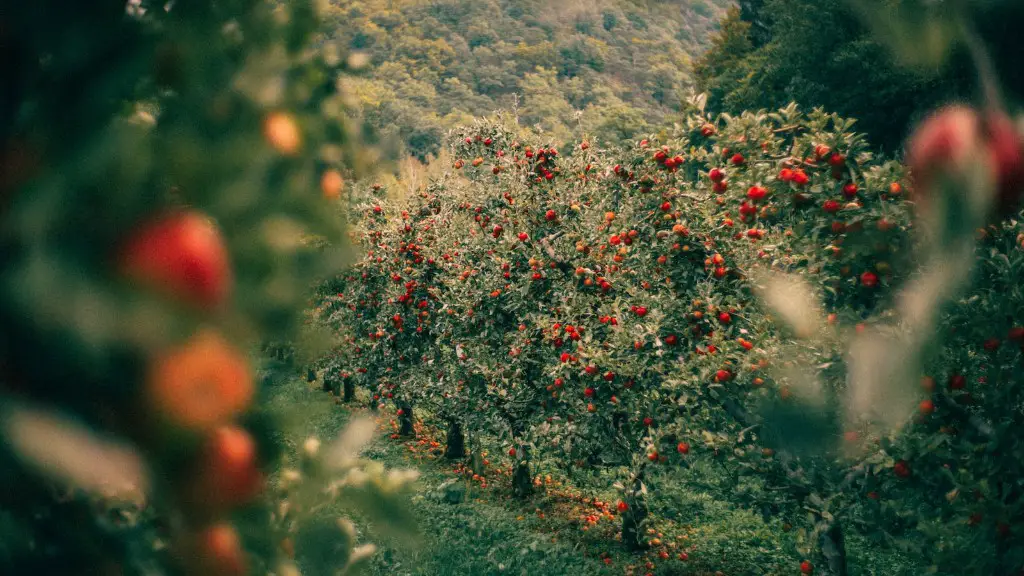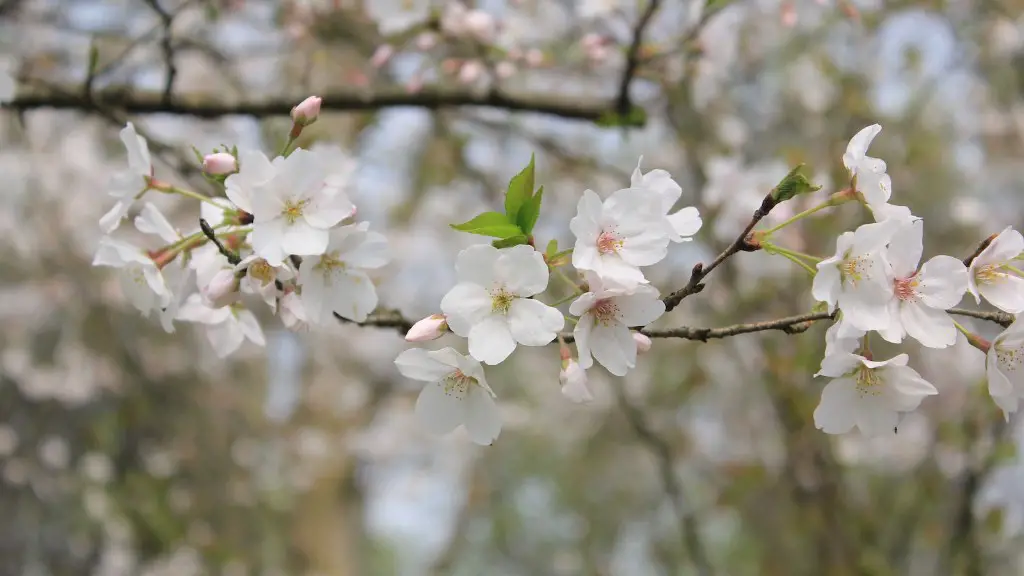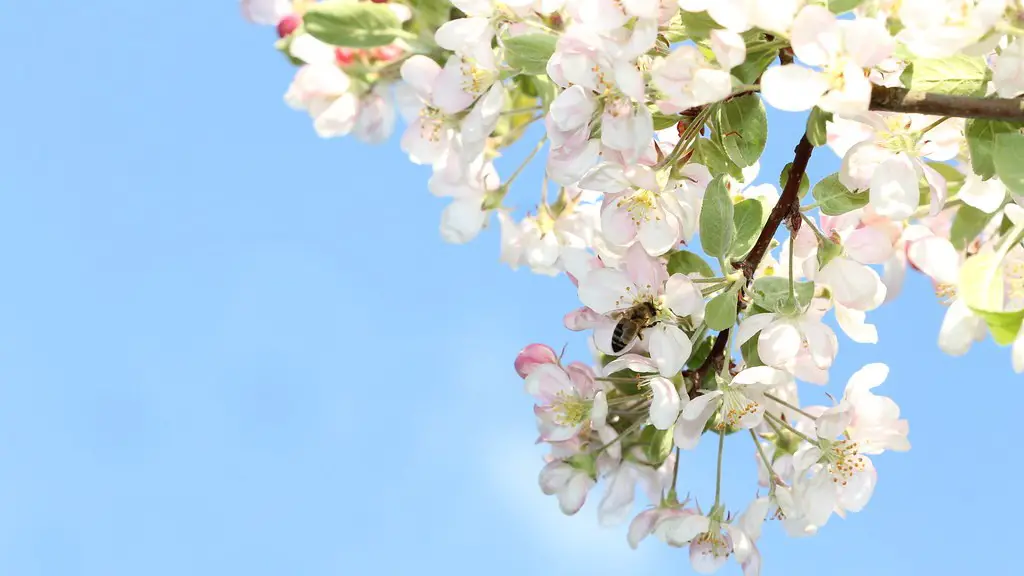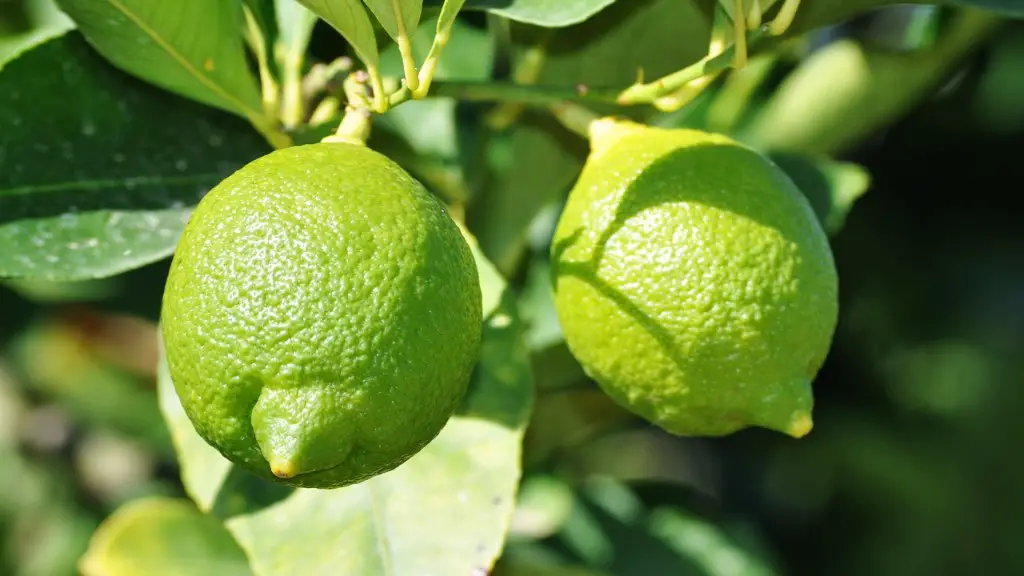The question of why leaves of your lemon tree are turning yellow can be answer in many ways. It could be nutrient deficiencies, poor irrigation, microbial diseases or even just natural aging of the tree. Contrarily, the underlying cause can be multiple and determining it needs an expert to examine the situation.
It is possible that the lemon tree is not getting the right kind of nutrition. Lemons are acidic fruits, and they prefer soils with an acidic pH level. Adding mineral or organic fertilizers, carefully, can help the nutrients needs of the tree. Furthermore, an inadequate or poor drainage of the soil can also cause nutrient deficiencies as it won’t allow the lemon tree to absorb these nutrients sufficiently.
Incorrect irrigation practices is another common problem for lemon trees. Watering the tree too frequently can be as bad for it as leaving it dry for too long. In both of the scenarios, the root system becomes weakened, potentially leading to yellowing of leaves due to the inaccessibility of nutrients.
The spread of microbial diseases is likely if you haven’t been providing your lemon tree with the proper care. Pythium root rot is an infection caused by overwatering your citrus trees, and this will cause the root system to decay, resulting in yellowing leaves. Furthermore, certain bacterial diseases can also spread rapidly amongst citrus trees causing symptoms such as yellowing of the leaves.
Finally, your lemon tree could be entering its natural aging process. You may observe some yellowing of leaves and other symptoms due to this natural process as the tree matures. Aging lemon trees usually need extra care, as nutrient deficiencies frequently occur as the tree grows older.
Nutrient Deficiencies
Nutrient deficiencies can occur due to incorrect soil pH, poor drainage of the soil or simply lack of fertilizers. Soil pH is an important factor for citrus trees since these fruits are known for their acidic nature. Allowing the soil to dry out is also key for fertilizers to work. Not adding sufficient fertilizers to the soil can also cause yellowing leaves.
To determine if your lemon tree has a nutrient deficiency, you’ll need to conduct a soil test to determine soil PH and nutrient loads. If you find a nutrient deficiency, consider using organic or mineral fertilizers to supplement the nutrition of your lemon tree. As always, apply the proper quantity of fertilizer according to the directions indicated on the packet to avoid over-fertilization.
Be careful not to saturate the soil or overwater your lemon tree as this might just make the situation worse. Careful and attentive inspection of the soil can help determine the right kind of fertilizers as per its needs and stop the yellowing of the leaves.
In order to make sure that your lemon tree is getting the right kind of nutrition, consider adding compost to the soil around the tree. Compost should be applied with care and in the right amount, as this is a slow acting solution. Adding natural ingredients like sea kelp, alfalfa meal and other compost activators can help speed up the composting process.
Apart from soil, leaves of a lemon tree can also indicate deficiency of macro-nutrients like nitrogen, phosphorous, and potassium. If the leaves appear yellow, yet the veins remain green, this can be indicative of a nitrogen deficiency. If the yellow color spreads throughout the leaf, but the smaller veins are still green, it may be a sign of potassium deficiency. Lastly, if the yellowing is more prominent near the tip and spreads outward to mid-vein, it may indicate a phosphorous deficiency.
Incorrect Irrigation Practices
Overwatering and underwatering your lemon tree can both contribute to yellowing of leaves. Overwatering the lemon tree can reduce the oxygen level in the soil and leads to root rot while underwatering the tree can cause stress to the plant.
To determine the right frequency of watering your lemon tree and the right amount of water, pay attention to the soil. Soils with high organic content like compost or peat moss will require less water. On the other hand, sandy soils that allow for easy drainage require more frequent but lesser amount of water.
Hence, it is important to modify the watering practices according to the types of soil. Water the lemon tree until there is runoff from the holes at the bottom of the pot or container. Do not pour too much water as this will just cause the water to run off instead of getting absorbed by the soil.
Allow the lemon tree to soak up the water instead of flooding it. You can also save water use by leaving a layer of mulch around the base of the tree. This not only helps to conserve moisture in the soil but can also aide in making sure the nutrients reach deep down to the roots.
When using drip irrigation, adjust the rate and quantity of water to a moderate amount. Also, consider using a timer to automate watering and set proper time intervals that suits the soil type. This will help to protect the roots from diseases and fix issues of water logging and underwatering.
Finally, consider using a soil moisture meter for better measurement of the water in the soil to avoid any human errors that might lead to yellowing of the leaves. Using such scientific methods can help to determine the right kind of water requirements of your tree and as a result, protect it from any kind of nutrient or water deficiency.
Microbial Diseases
In order to protect the lemon tree from any kind of microbial diseases, proper attention must be paid to sanitation and cleanliness. Amongst various microbial diseases, the most common one is pythium root rot caused by waterlogging and poor drainage. When the water cannot drain away properly, the lemon tree will suffer from a lack of oxygen, which can increase its vulnerability to microbial diseases.
To protect your lemon tree from microbes, it is important to ensure that no excess water accumulates around the tree. As stated earlier, make sure to pay attention to soil drainage and use mulch and compost to promote healthy root growth. Also, ensure that no dead leaves and debris accumulate around the tree as this can be a source of infection for the tree.
Spraying fungicides on the leaves that show signs of yellowing can be beneficial, as this will kill off any microbes that might be living on the yellowed leaves. Furthermore, applying copper-based fungicide onto the soil can also help to protect the lemon tree from any fungal or bacterial infection.
Benzimidazole is an effective fungicide that can be used to protect your lemon tree from any kind of root rot or microbial diseases. It is advised to avoid using any pesticide that is labelled as highly toxic as this can be hazardous to human beings as well. Making use of organic pest repellants and fungicides can help avoid any kind of lasting damage.
It is important to note that the symptoms of microbial diseases could appear in both young and old lemon trees. As such, regular pruning and inspecting of both the leaves and roots should be done to predict any kind of yellowing of the leaves which might be due to microbial diseases. By taking preventive measures and paying attention to the soil and lemon tree, you can avoid the yellowing of leaves due to microbial infestation.
Aging Lemon Trees
When a lemon tree matures and enters its period of aging, it is logical that yellowing of leaves will be observed. This signifies natural aging and there is no need for alarm. This is a normal process and it can be observed in any fruit bearing tree.
An aging lemon tree requires extra attention to ensure that the leaves remain lush and green. The trees require more nutrients, minerals, fertilizers and adequate amounts of sunlight to sustain itself.
In such conditions, it is better to pay extra attention to the tree and its leaves since it has weakened over the years. Consider applying liquid seaweed, fish emulsion or all-purpose fertilizers to supplement the needs of the tree.
Furthermore, yellowness of the leaves could also be due to harsh sunlight and extreme weather conditions. It is important to check if the lemon tree is receiving adequate sunlight and covering it with a light cloth in times of extreme weather can help protect it.
Finally, it is also important to remind yourself that an aging lemon tree might never be as green or vibrant like its younger counterpart. Successfully keeping it in a healthy condition needs effort, attention and precaution as different issues like diseases and nutrient deficiency might arise with age.
